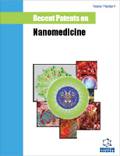Abstract
Despite intense research efforts; effective delivery of drugs to the eye remains an enormous challenge. The eye is a unique organ with complex structure and functions. It is protected by static and dynamic barriers. Static barriers are formed by the relatively impermeable corneal layers, sclera, and retina, including blood aqueous and blood-retinal barriers, while dynamic barriers consist of choroidal and conjunctival blood flow, lymphatic clearance, and tear dilution. Diseases affecting the eye such as cataract, glaucoma, wet and dry age-related macular degeneration, diabetic macular edema, proliferative vitreoretinopathy, uveitis, and cytomegalovirus retinitis, result in gradual loss of vision if left untreated. The design of an ideal drug delivery system requires thorough knowledge of the disease pathology and biochemical changes that occur at the molecular and cellular levels. Over the last decade, new treatment modalities comprised of nanocarriers are underway for optimizing the physicochemical properties of drug molecules and minimizing the barrier properties of the eye. Nanoparticles have the potential to improve pharmacokinetics of ophthalmic drugs by surpassing the blood-aqueous and blood-retinal barriers. This review provides comprehensive and updated information on ocular drug delivery, with special emphasis on research articles and patents that involve the use of polymeric nanoparticles in treatment of vision-threatening diseases.
Keywords: Anterior segment, eye, nanoparticles, ocular diseases, posterior segment, Polymeric Nanoparticles, Ophthalmic Drug Delivery, sclera, diabetic macular edema, proliferative vitreoretinopathy, GLAUCOMA, retinal ganglionic cells, optic neuropathy , Cataract, Floaters, Retinoschisis, Iritis
 17
17

